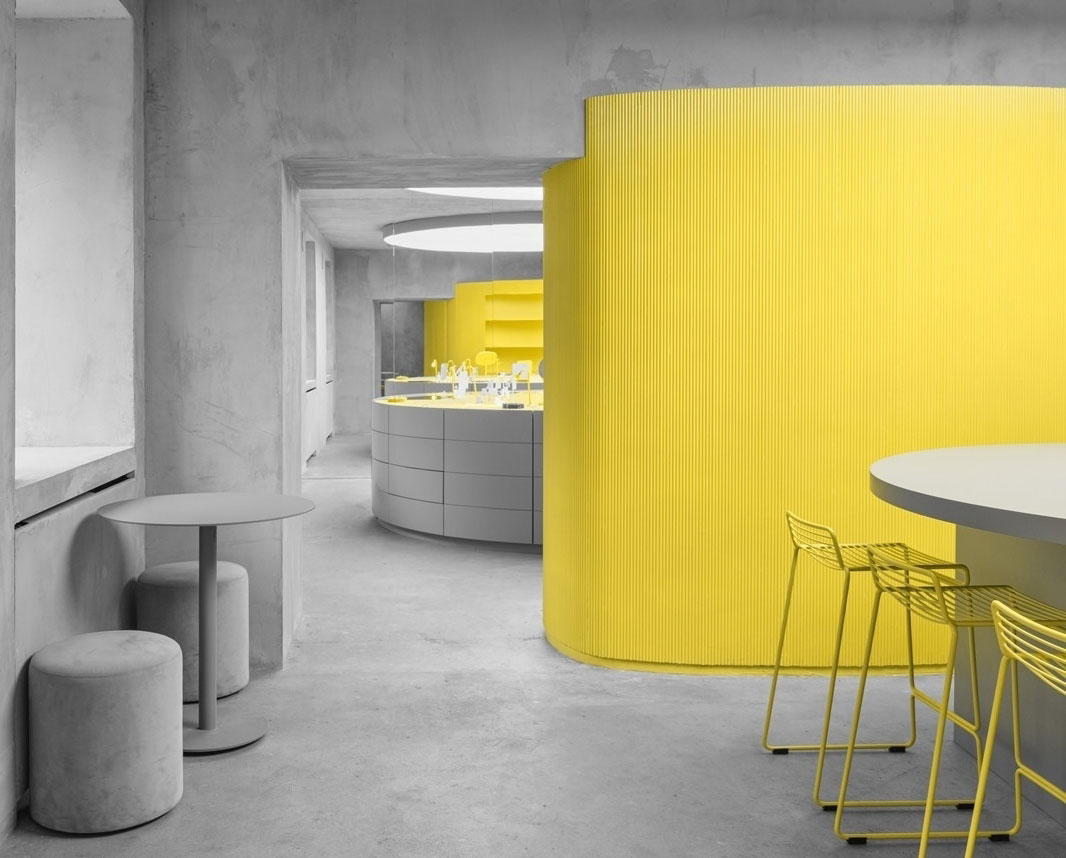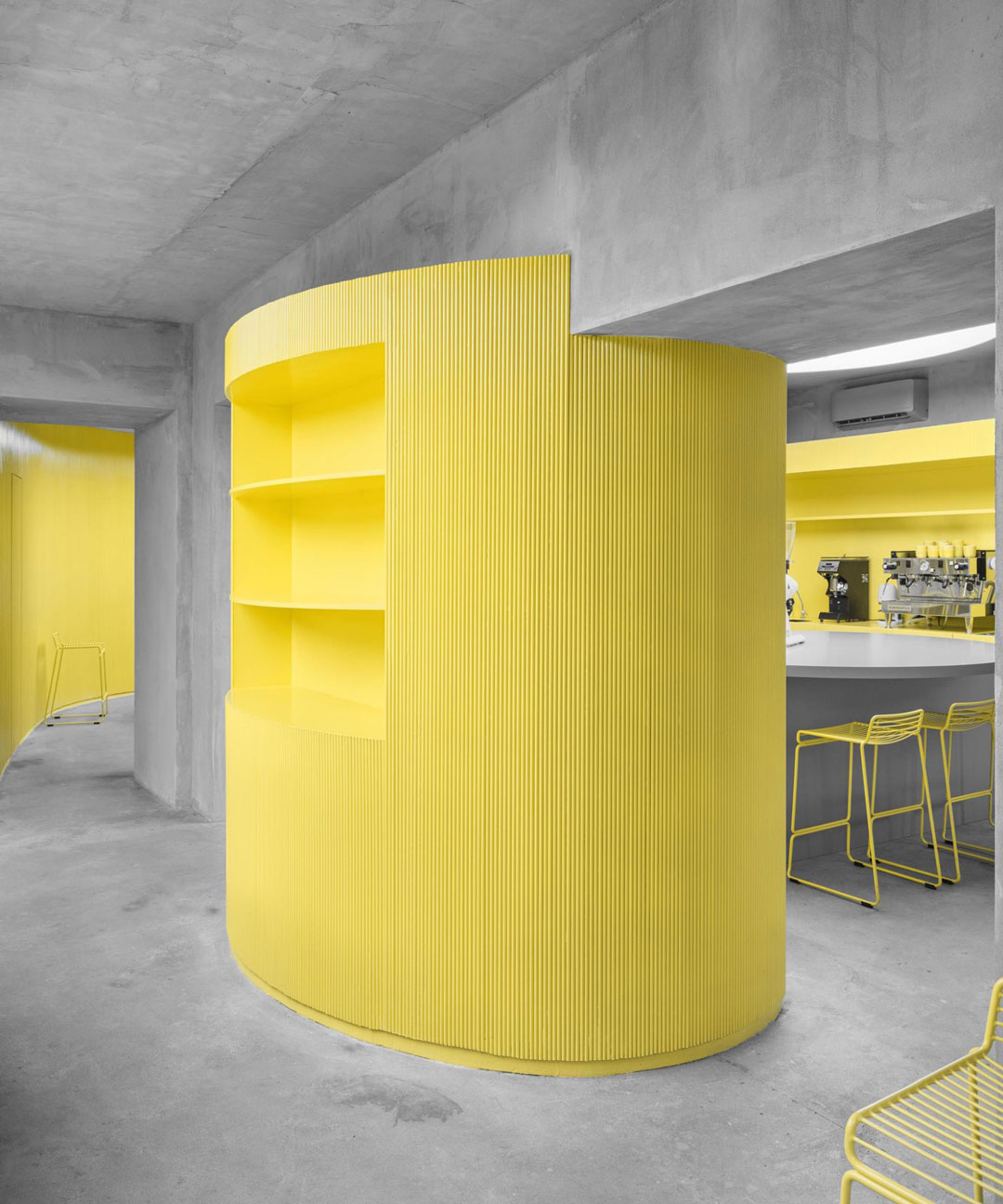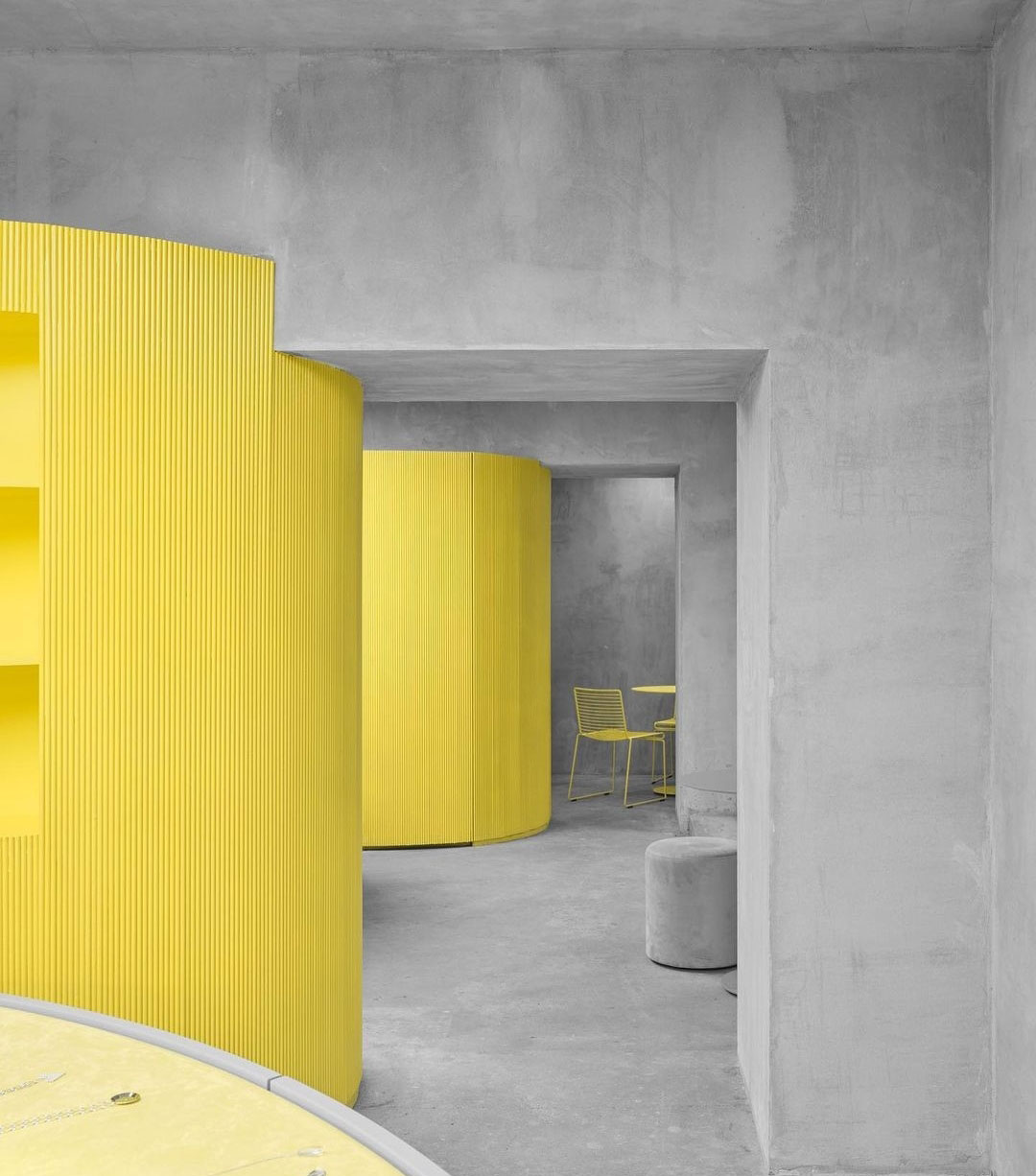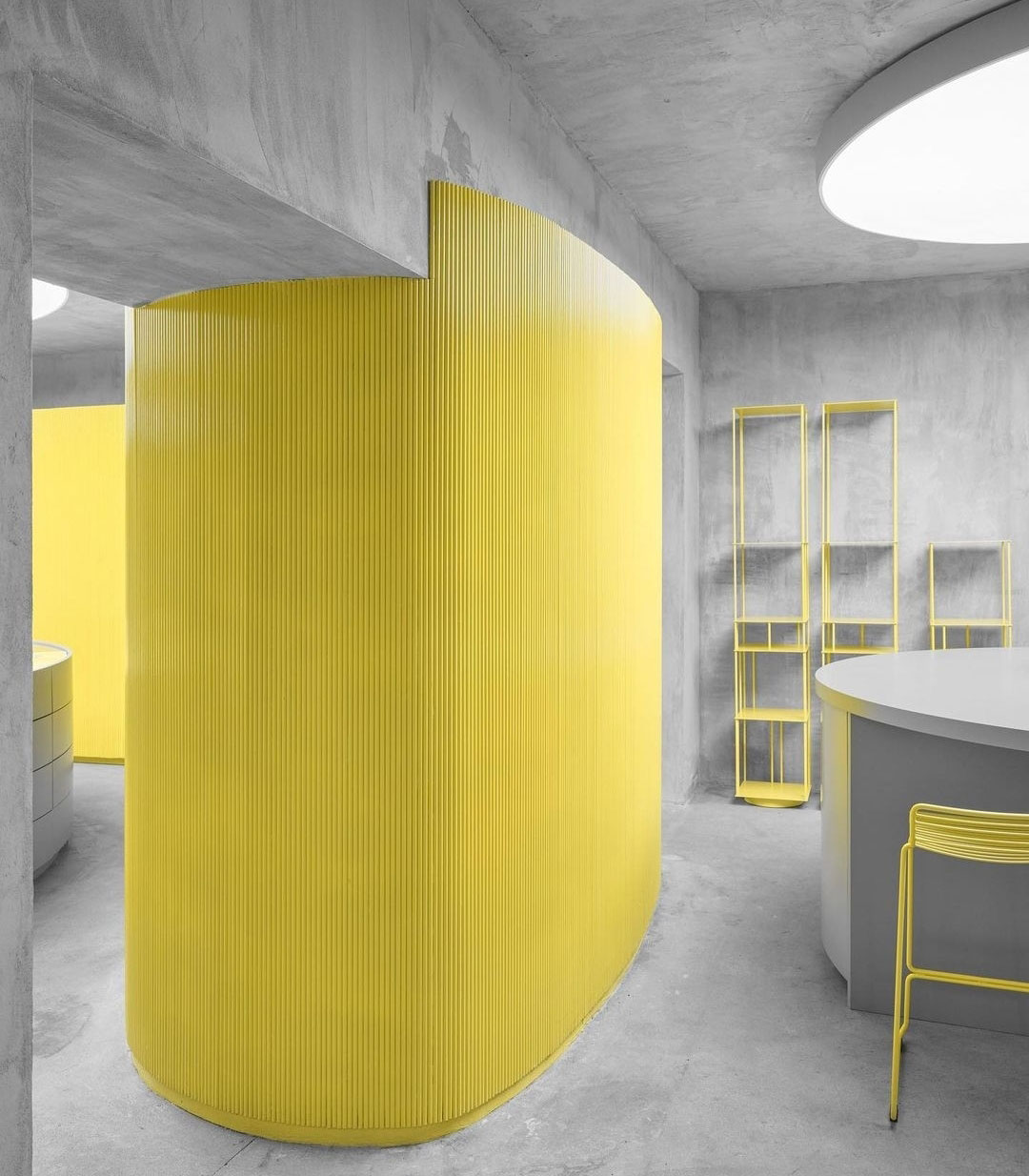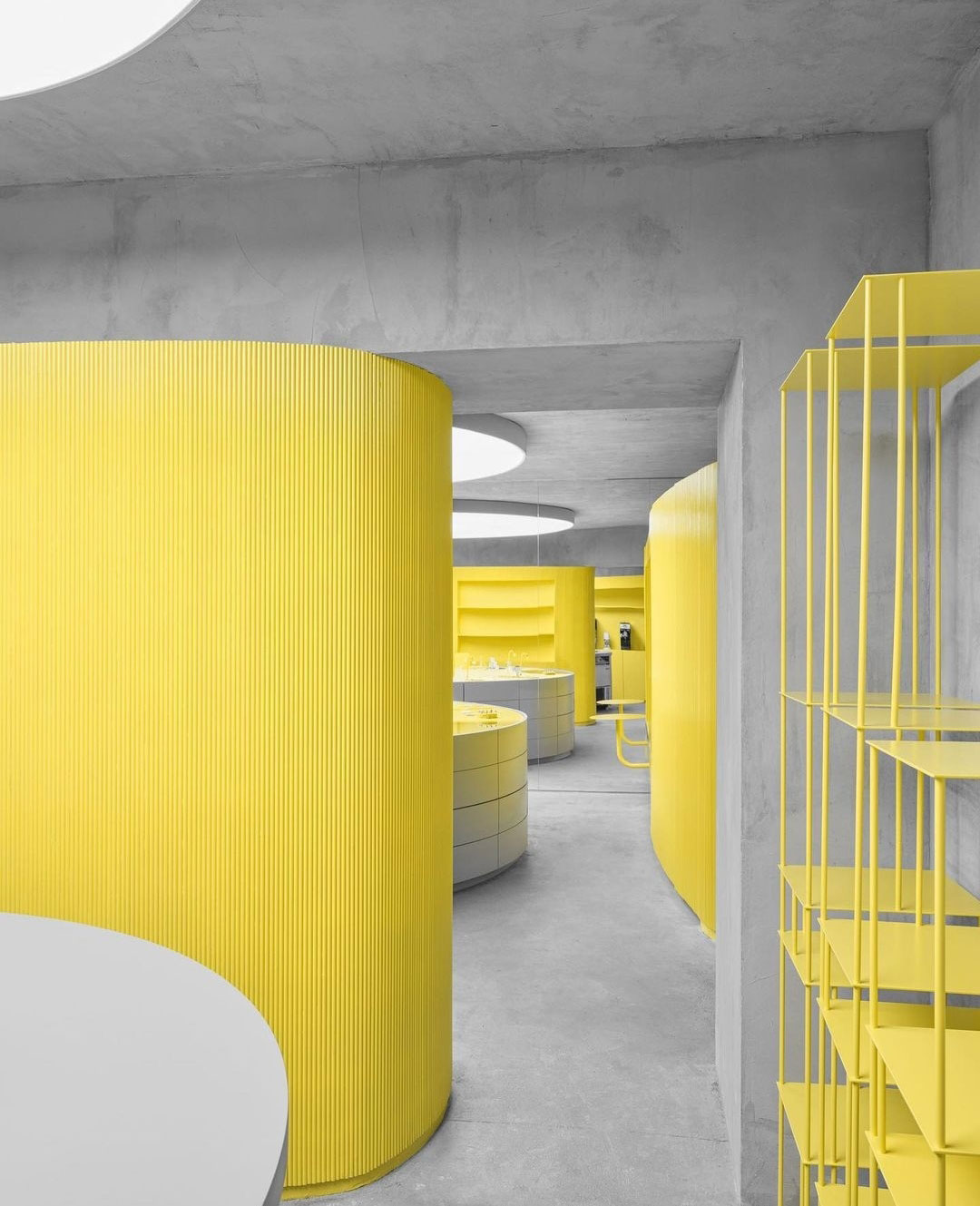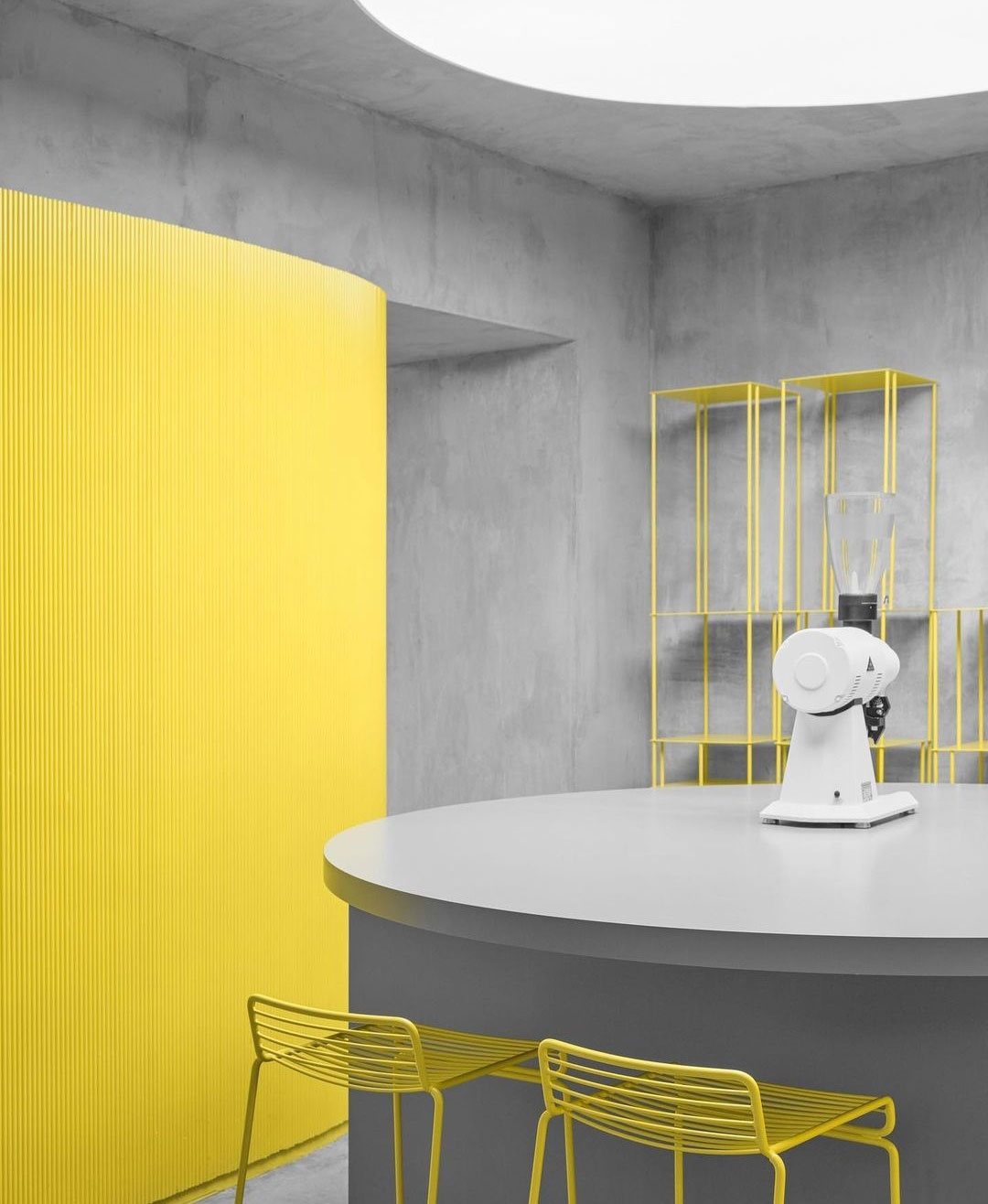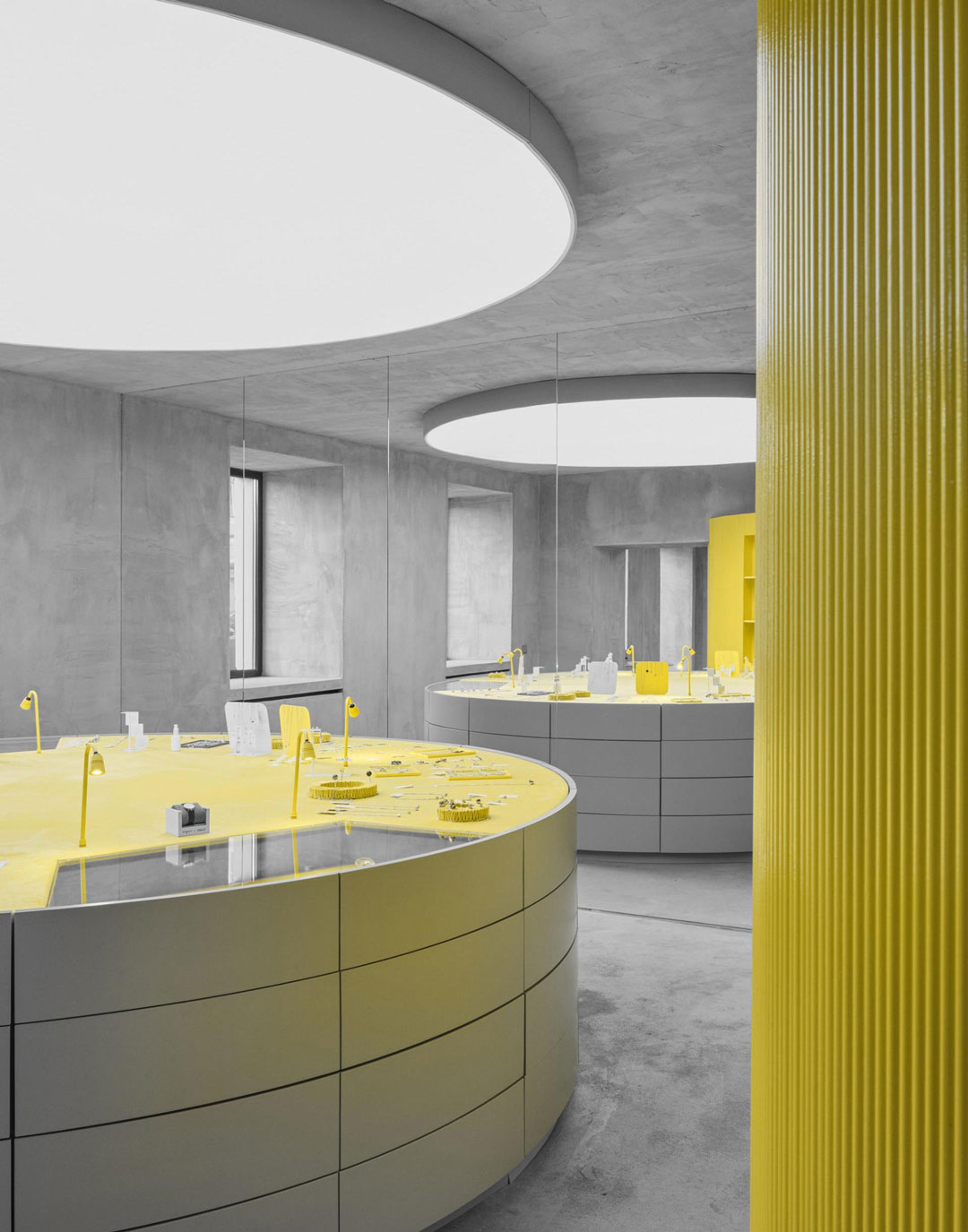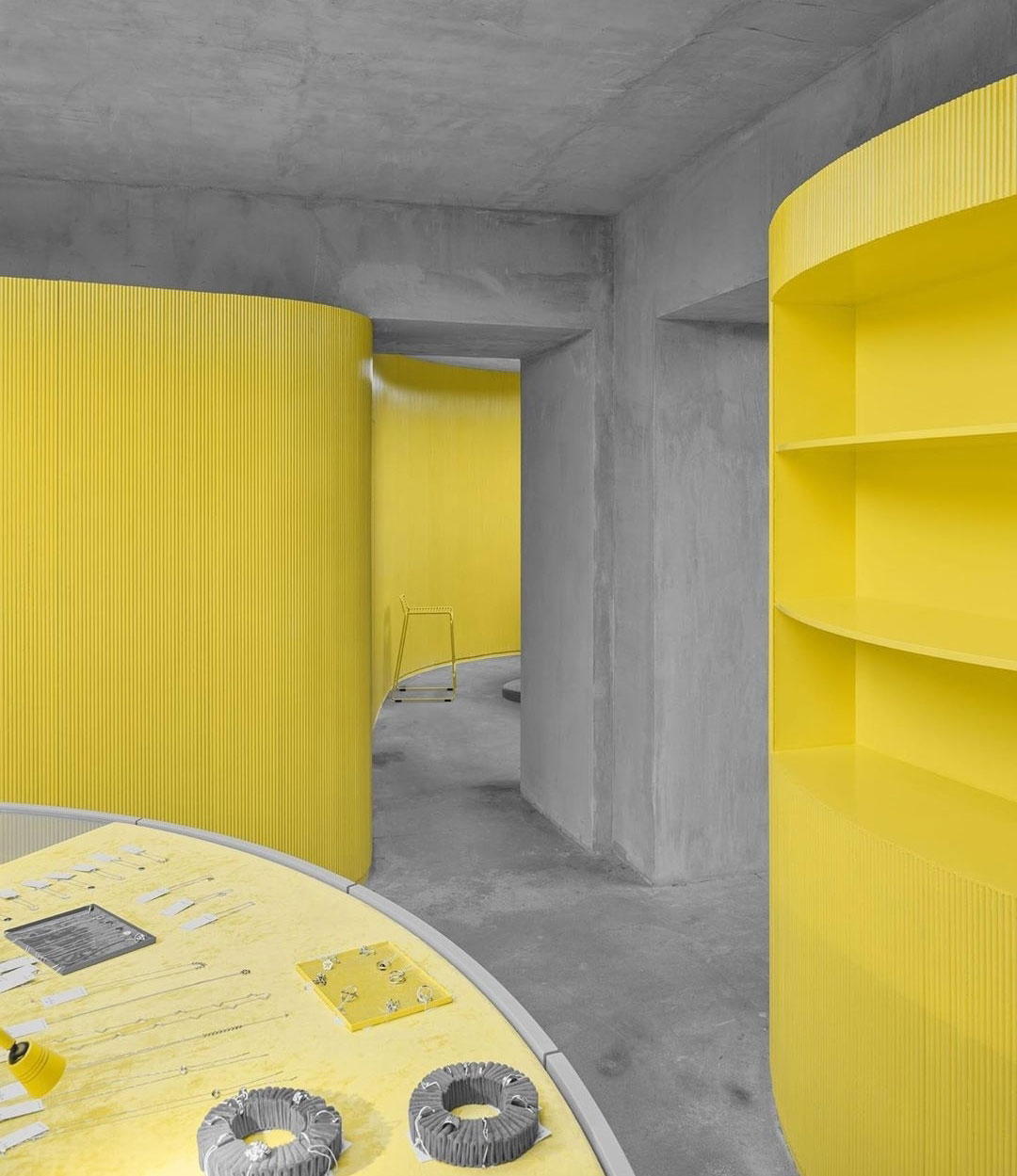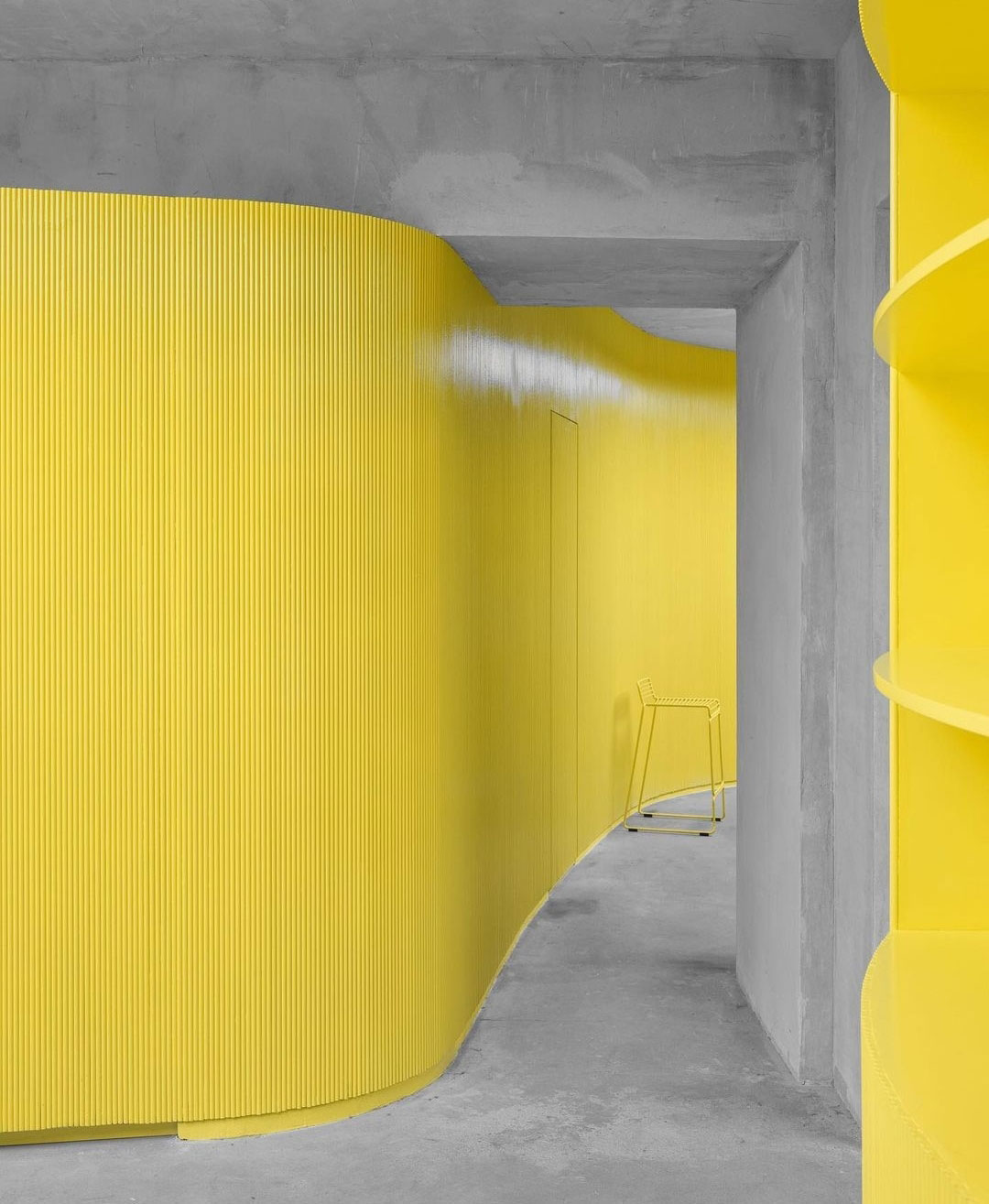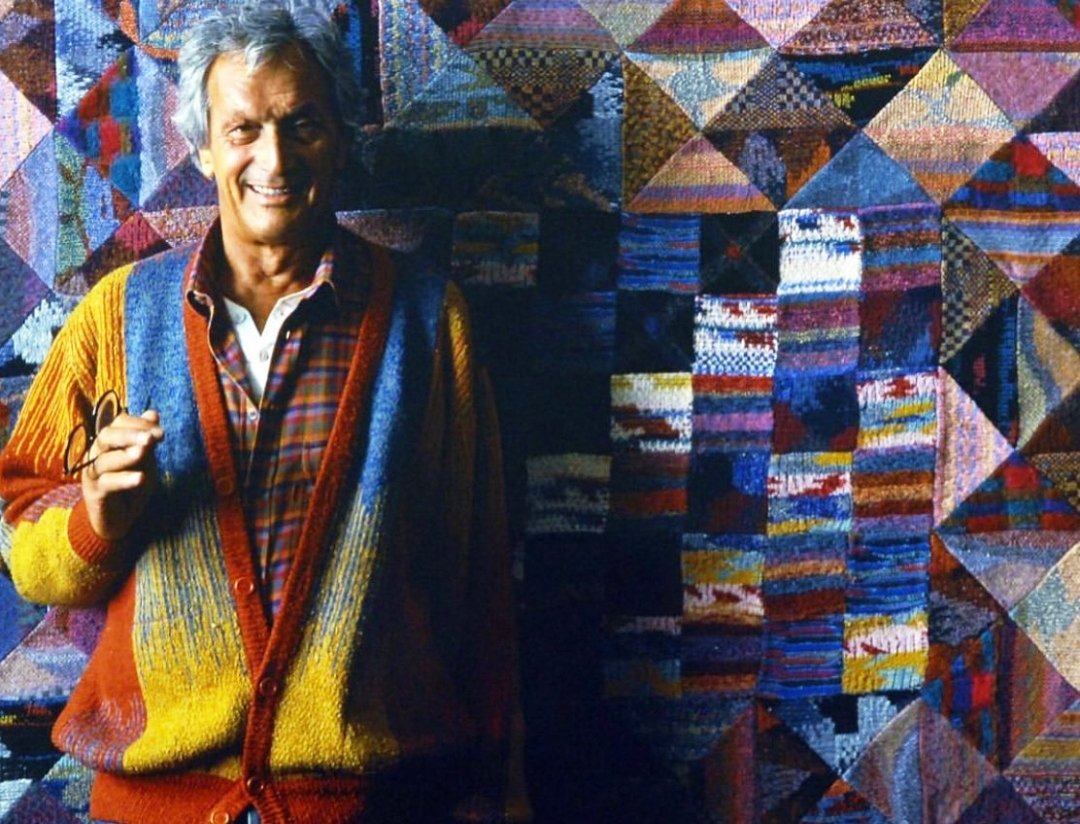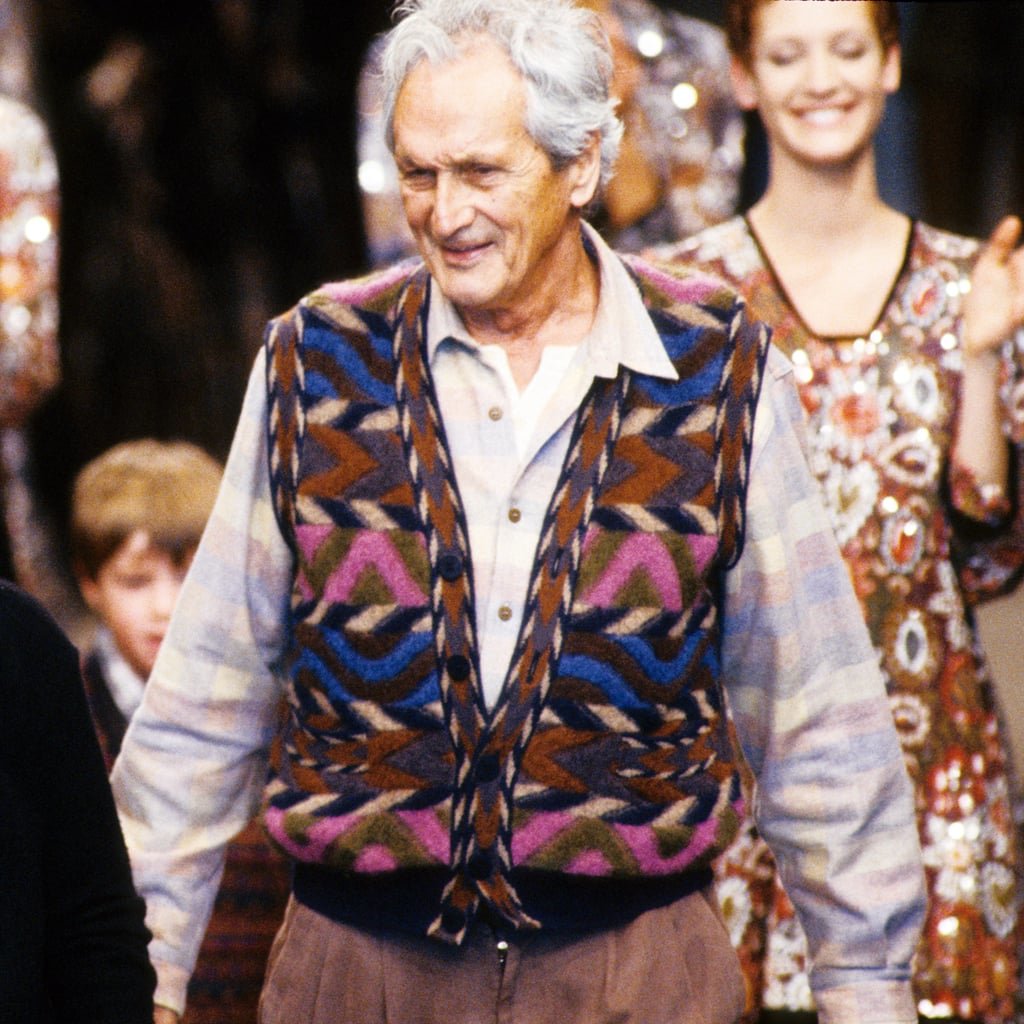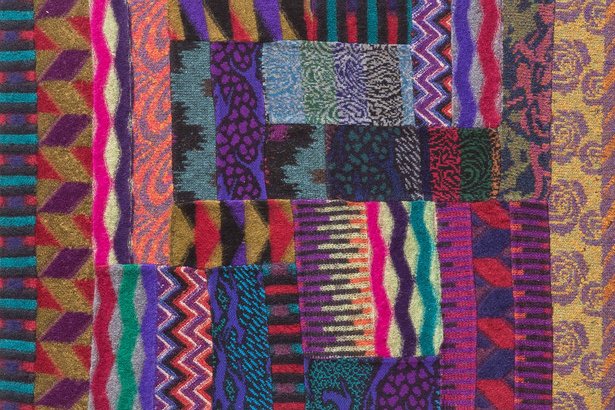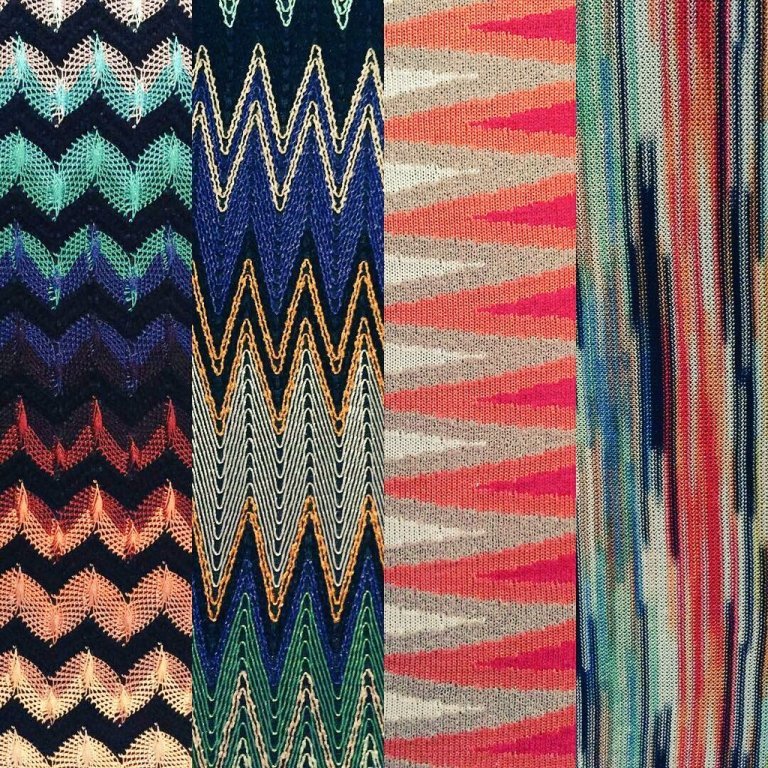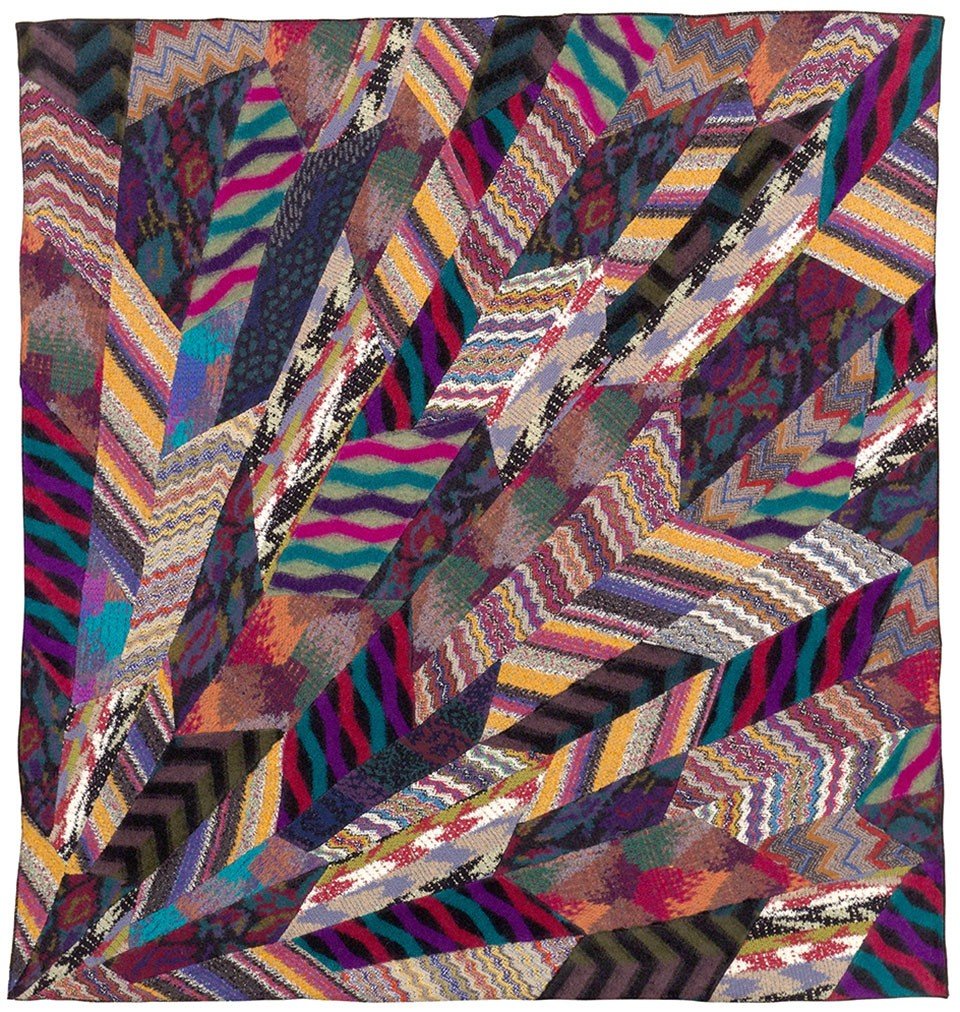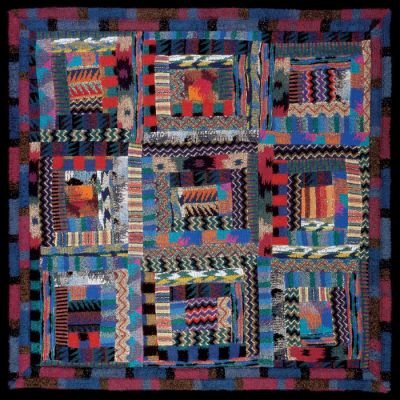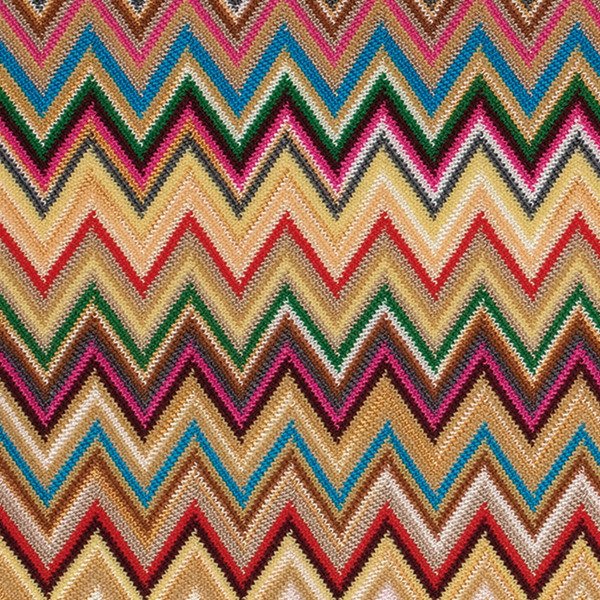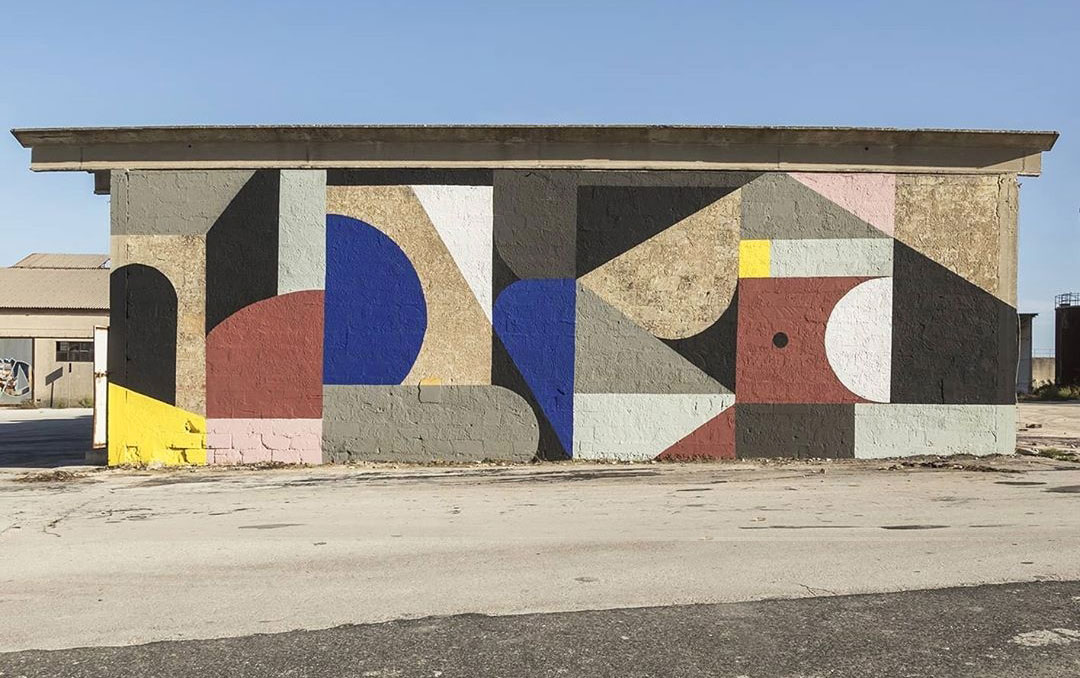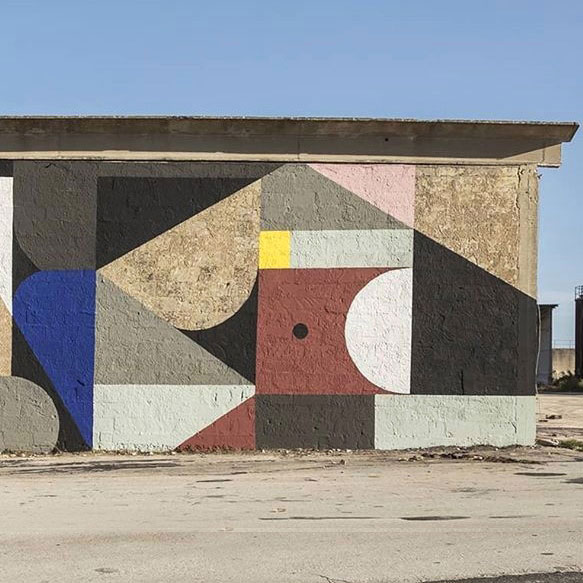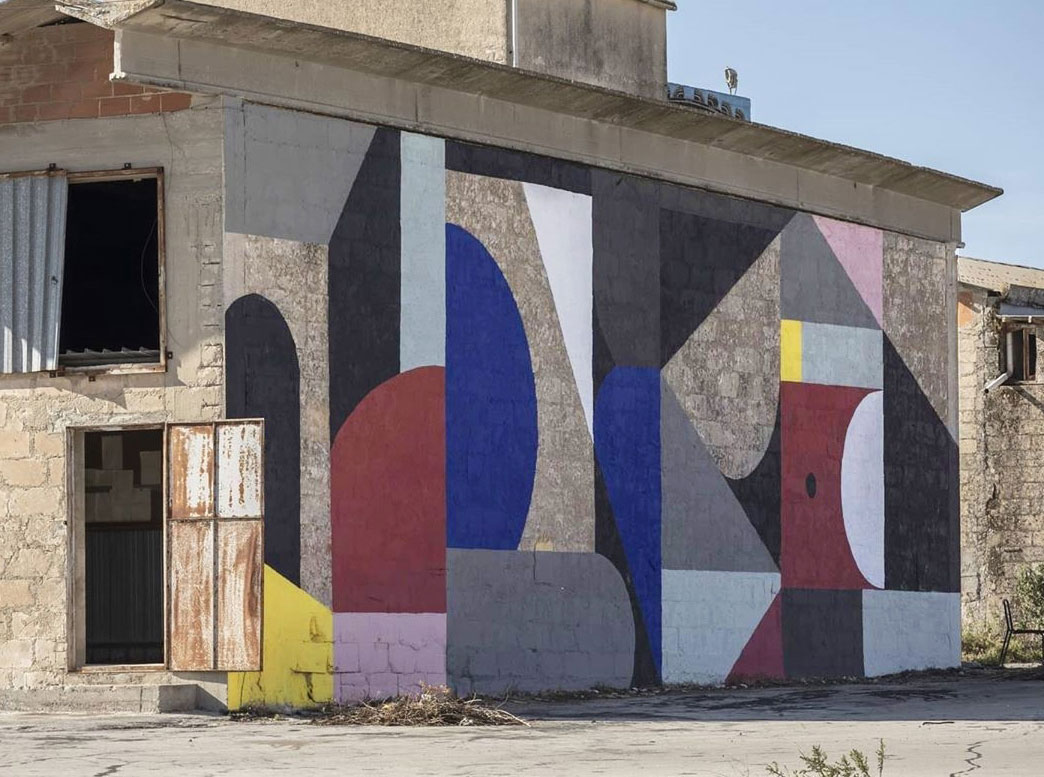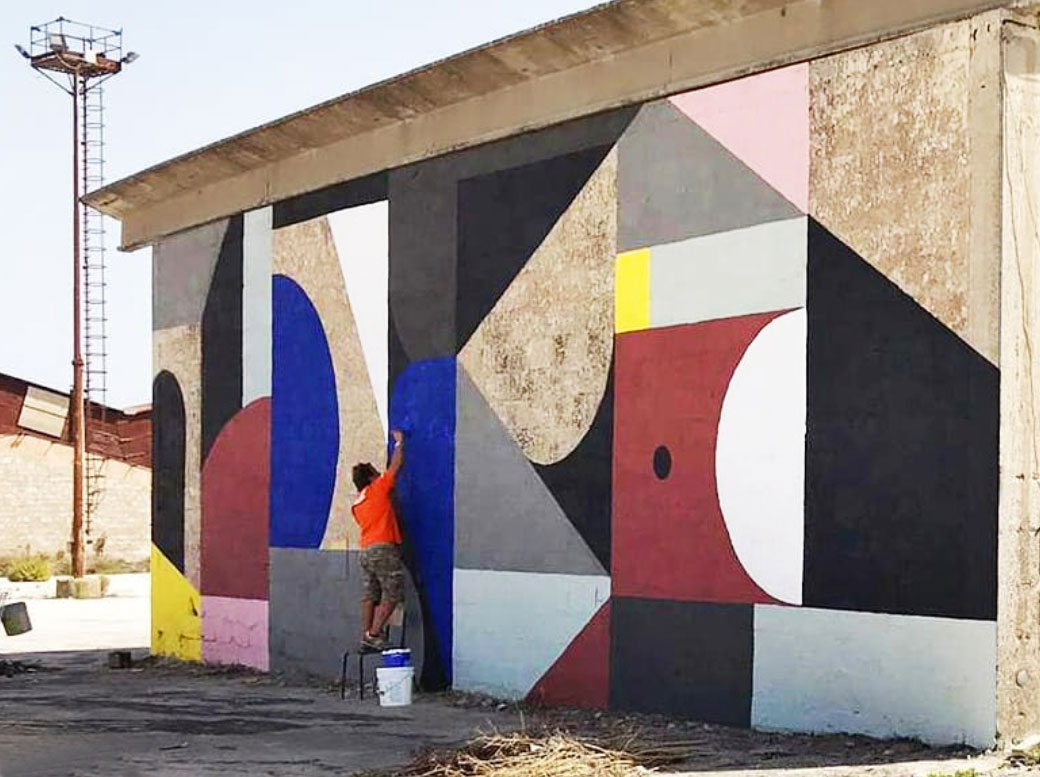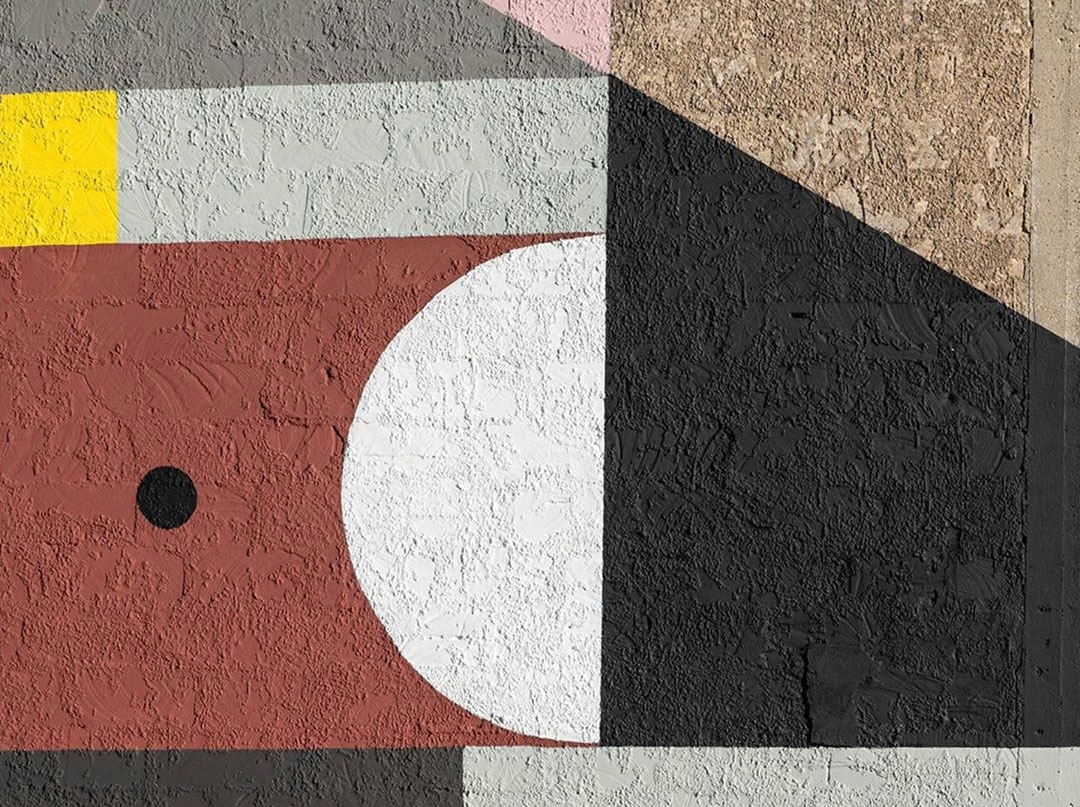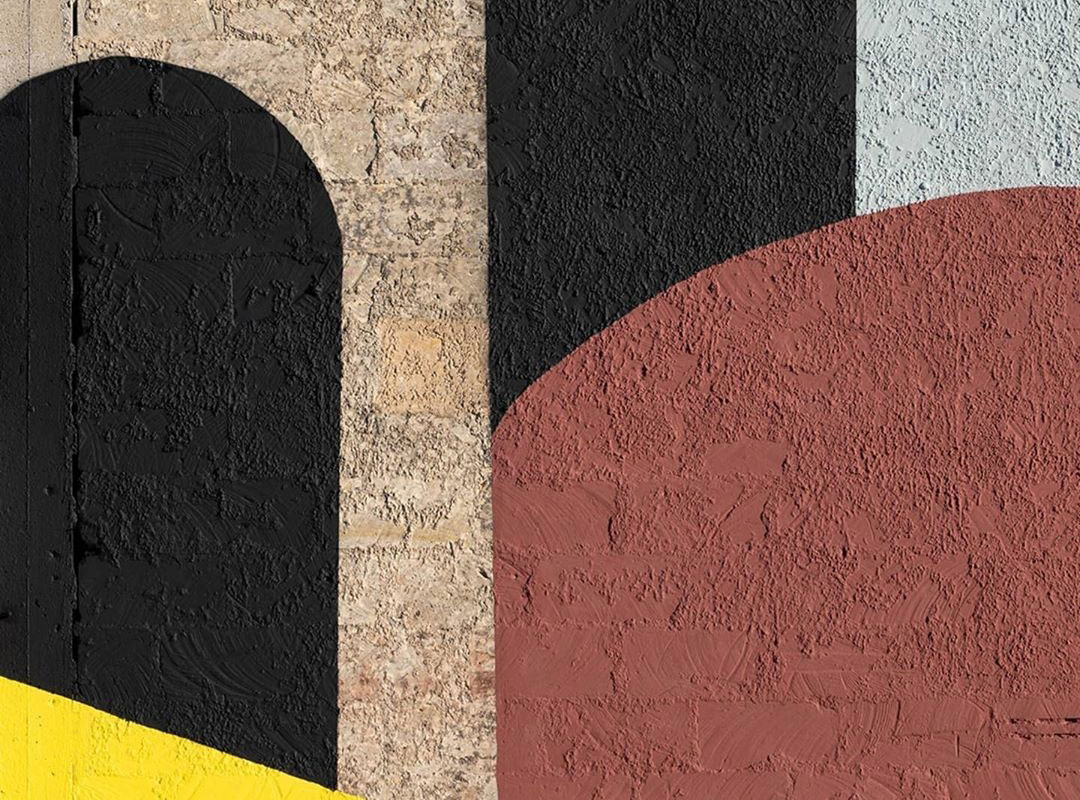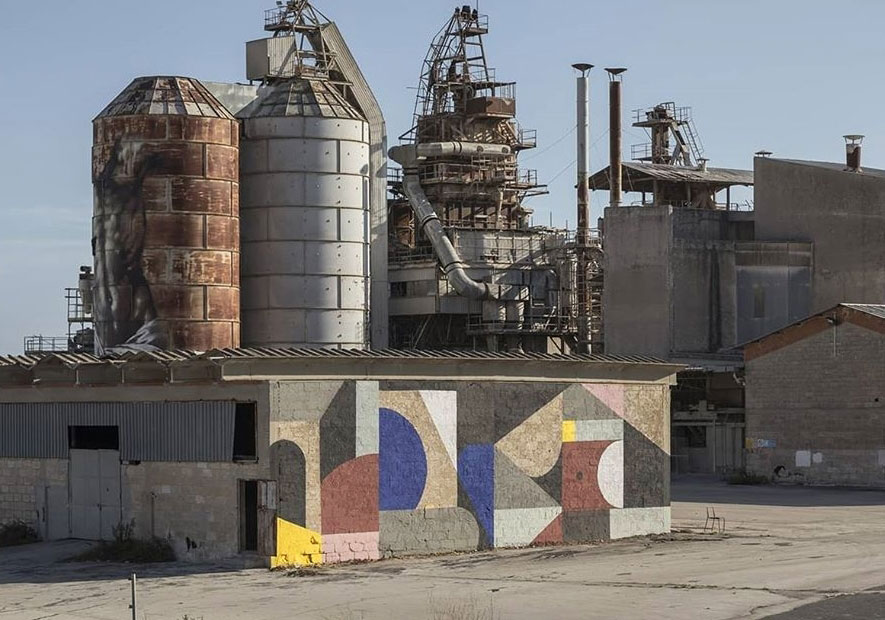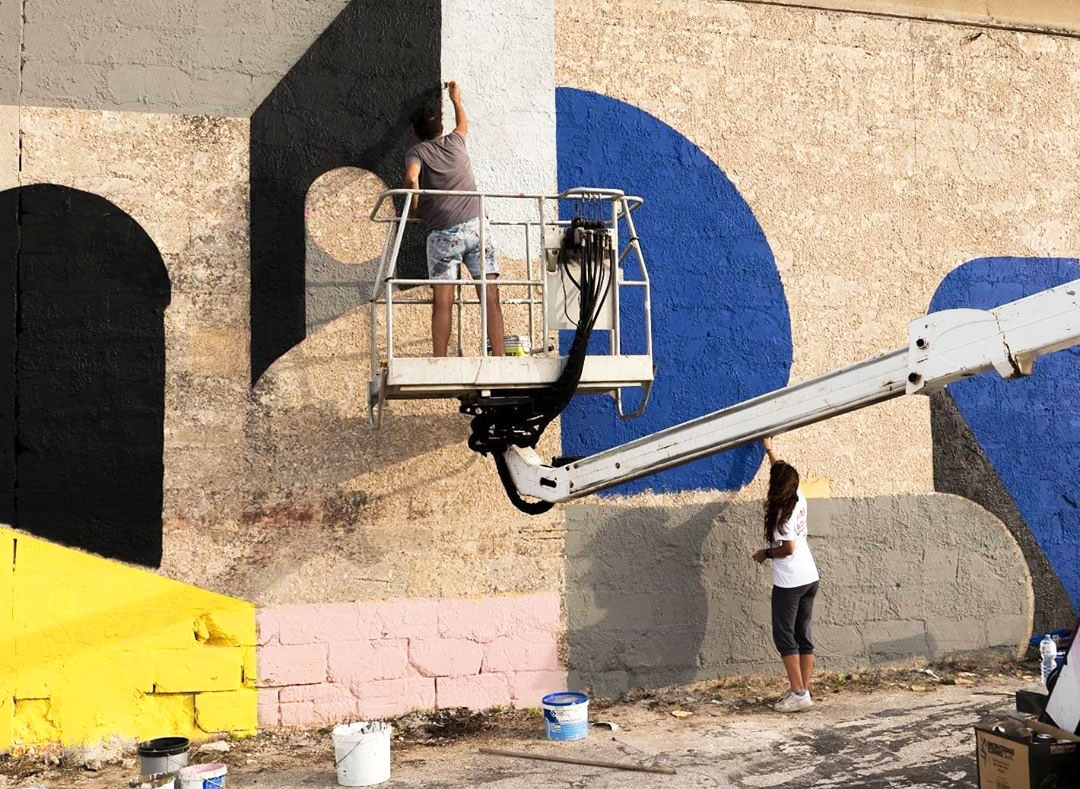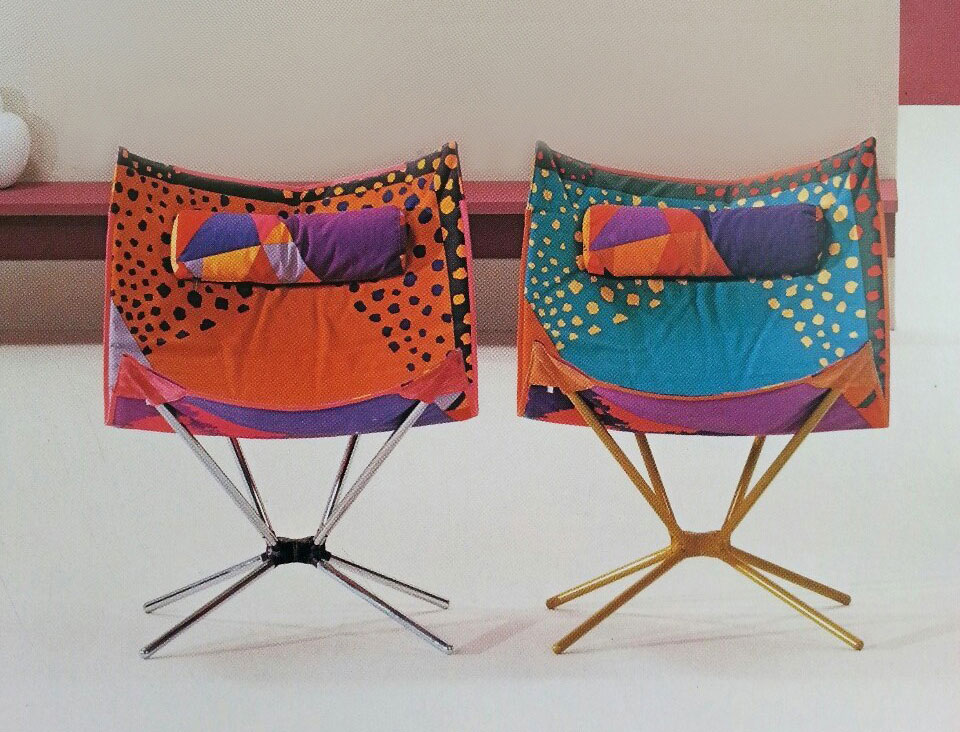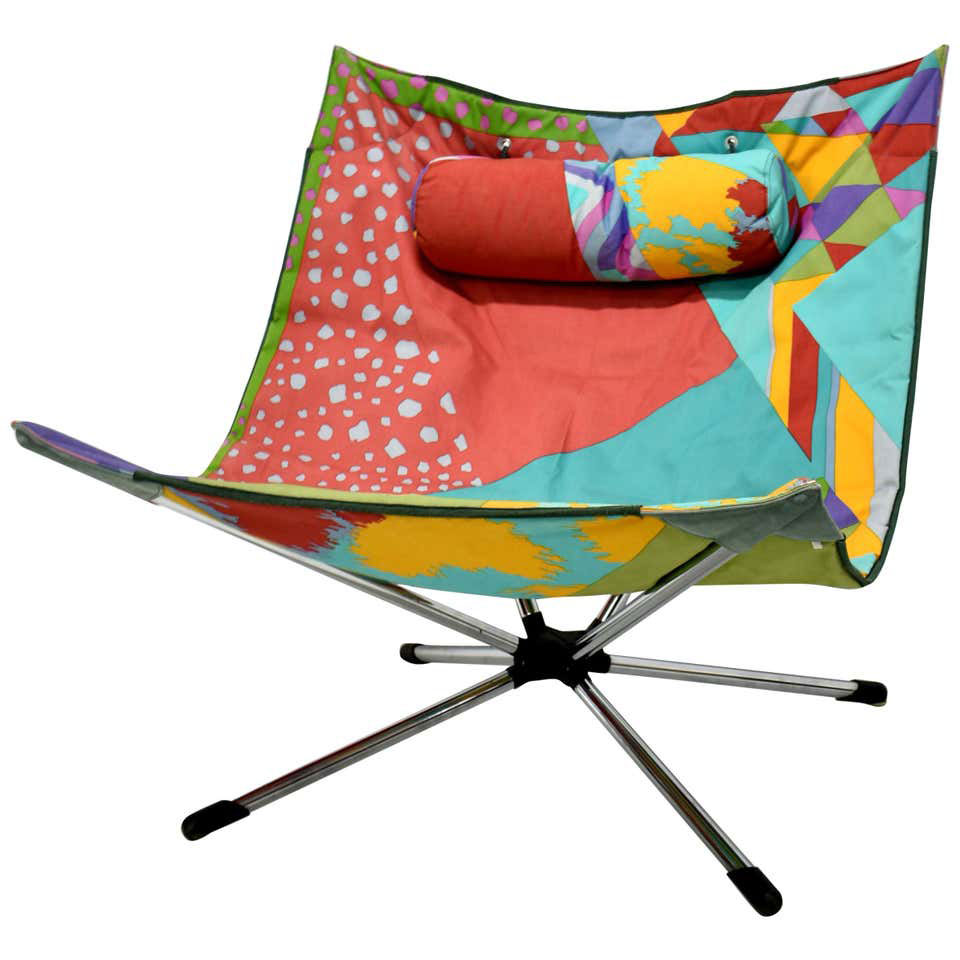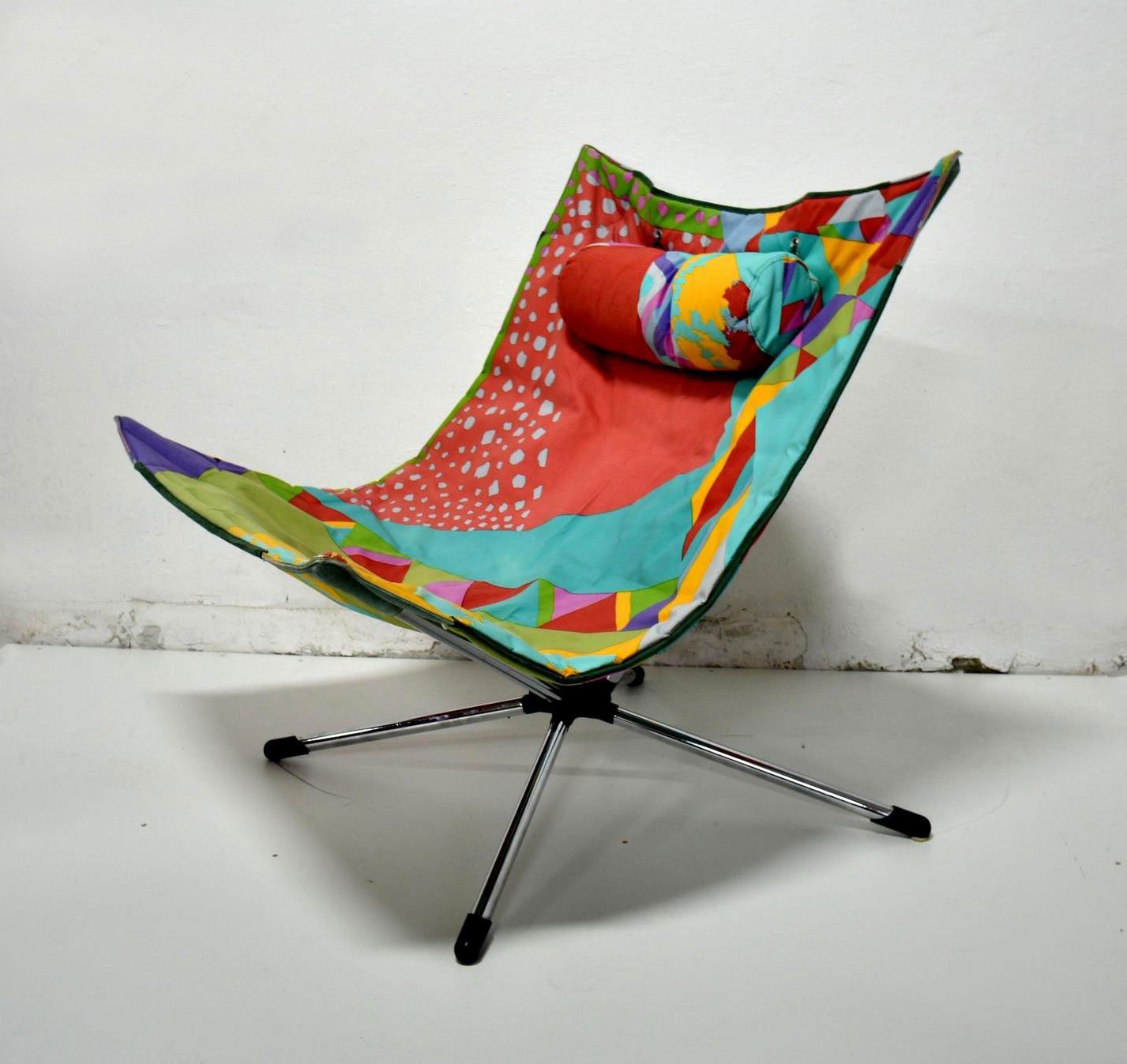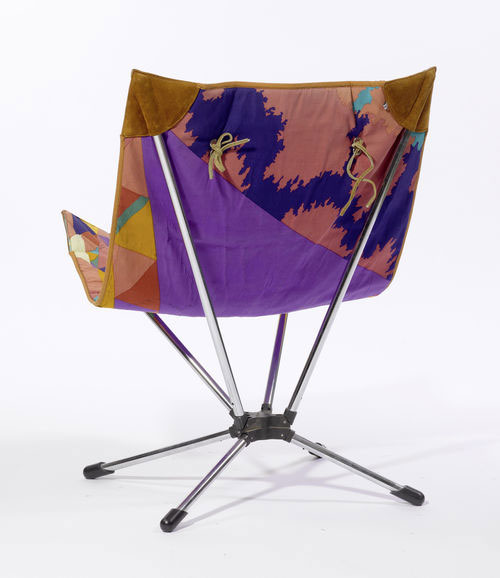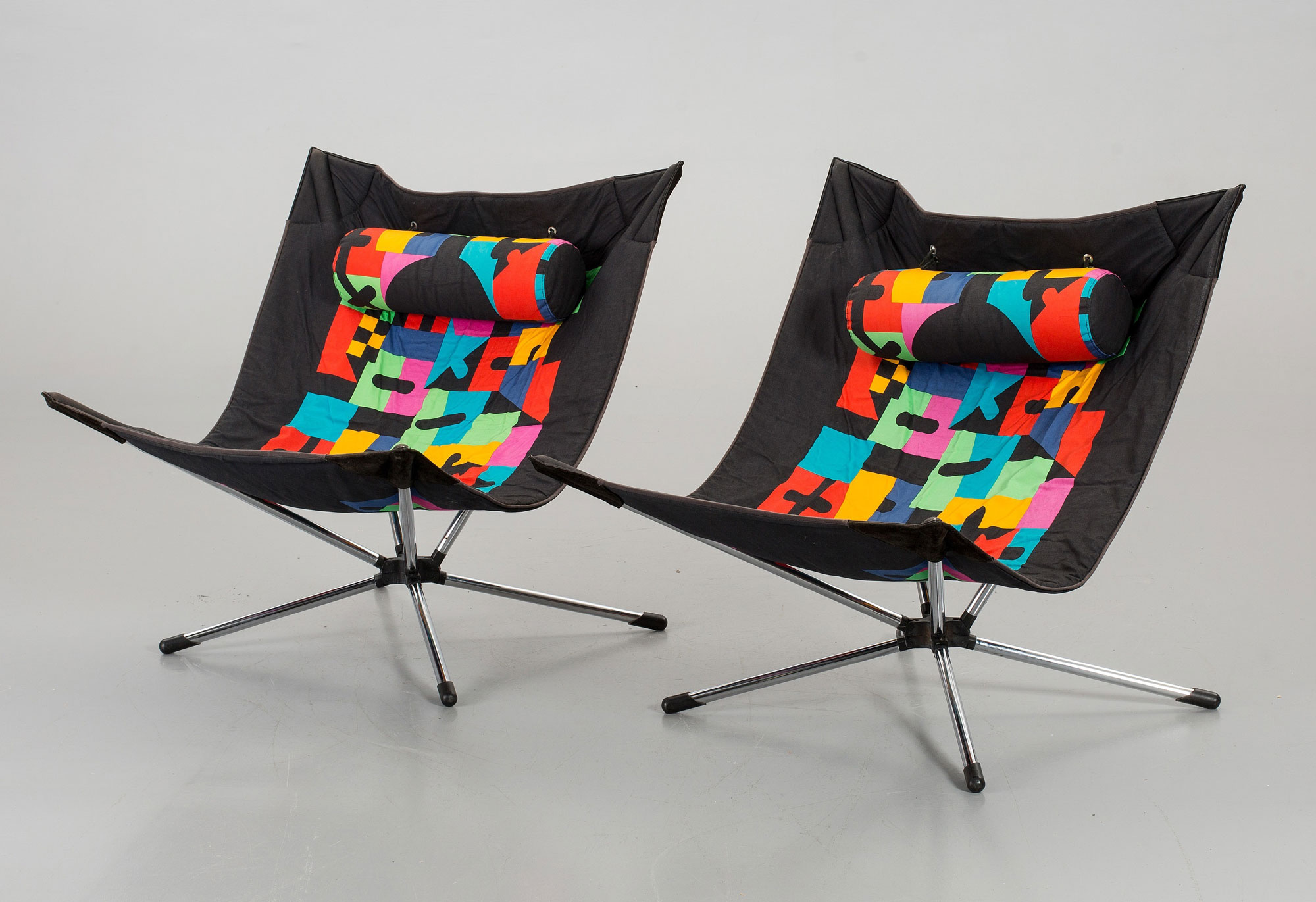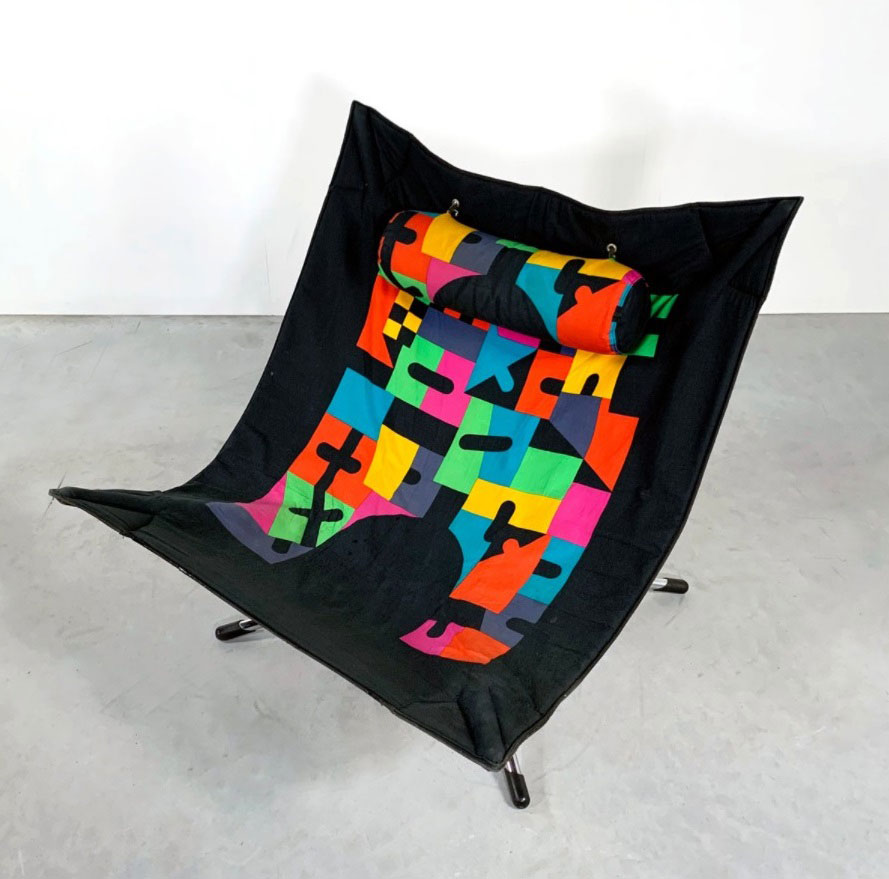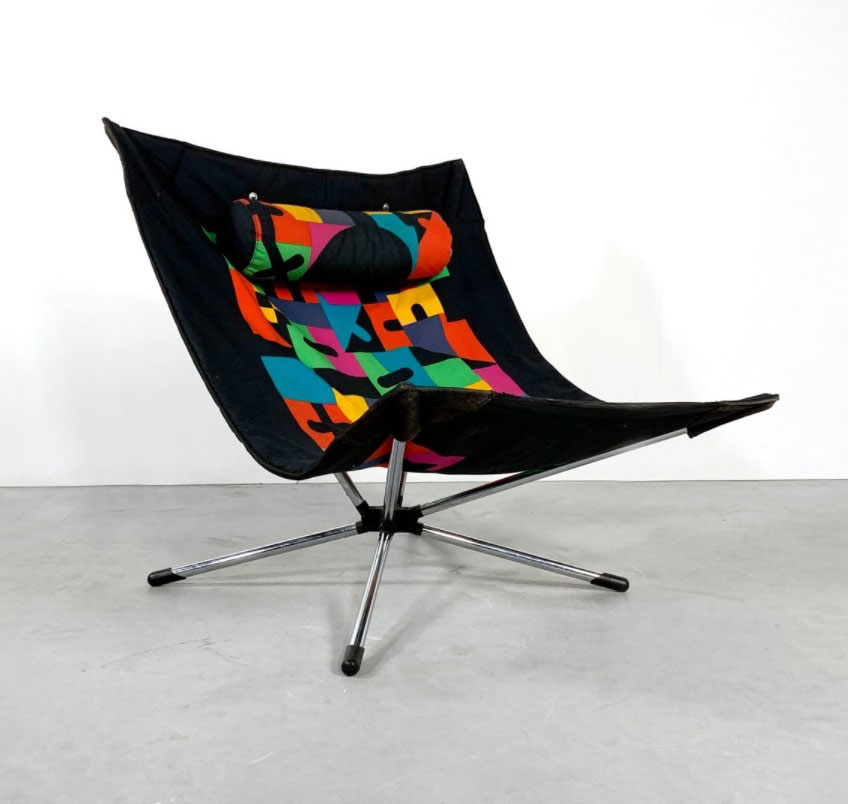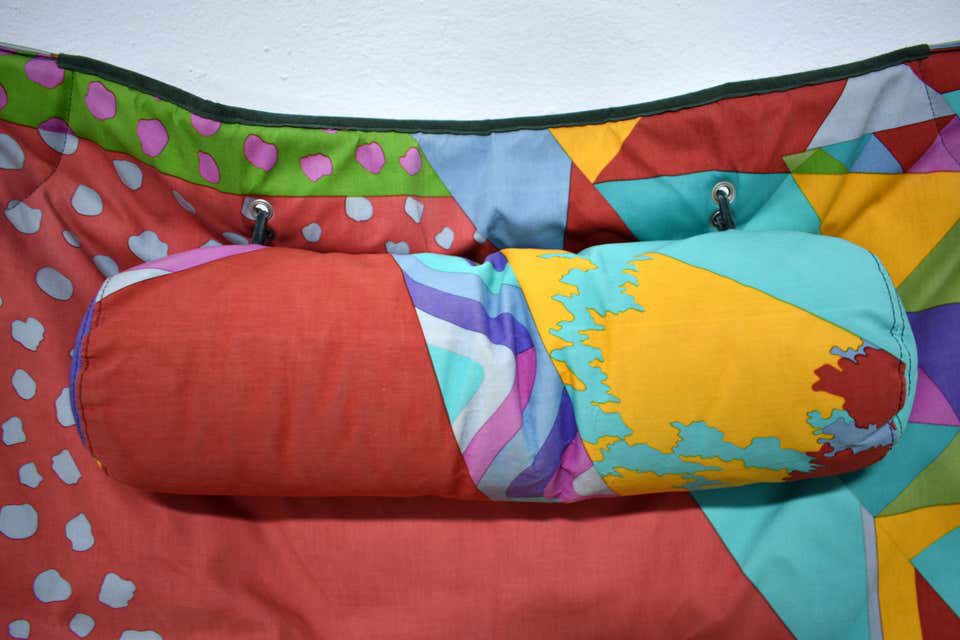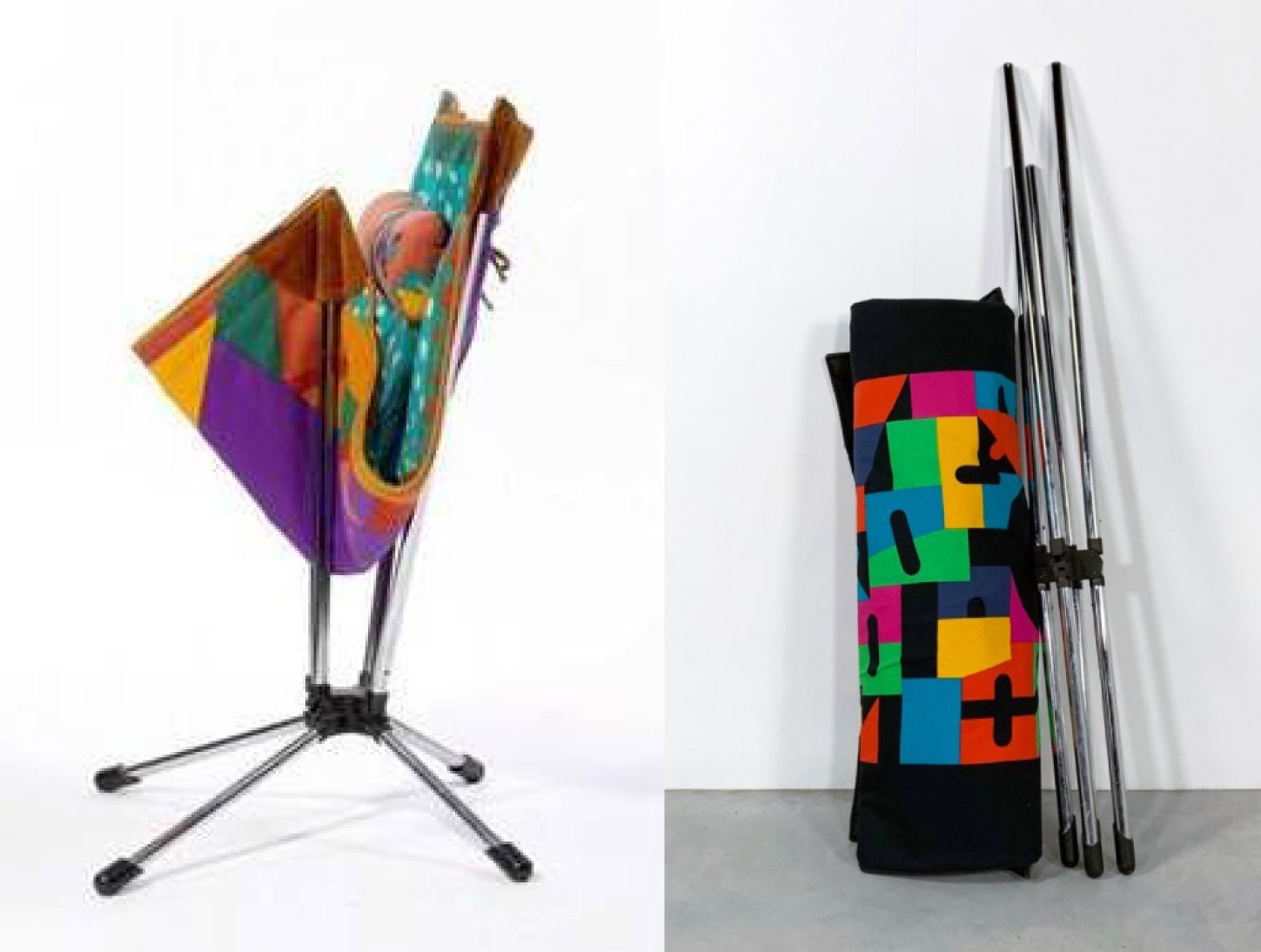CAFFÈ TRA I GIOIELLI
RETAIL | CROSBY STUDIOS
Natalia Bryantseva, fondatrice e direttrice creativa della gioielleria russa Avgvst, ha sempre sognato di aprire un negozio dotato di caffetteria, anche nella convinzione di accrescere l’afflusso della clientela. Questo intento si è concretizzato nel nuovo flagshipstore di San Pietroburgo, di cui Crosby Studios ha progettato l’“esperienza totale”.
Il negozio è frazionato in tre aree, destinate rispettivamente alla vendita, alla reception e al bar.
I punti di ispirazione sono la cappella Notre Dame du Haut di Le Corbusier e il vaso curvo di Alvar Aalto. Ma quei riferimenti vengono interpretati in chiave assolutamente personale proprio grazie all’uso del colore.
Le superfici dei locali vengono trattate a effetto cemento umido, mentre ogni elemento di arredo (comprese le quinte ondulate che raccordano fra loro le tre zone) è giallo acido. Un match esplosivo e originalissimo, riconducibile a un assemblaggio di scatole grezze in cui vengono collocati pochi oggetti in forte risalto.
Coffee among the jewels – Natalia Bryantseva, founder and creative director of the Russian jewelry Avgvst, has always dreamed of opening a shop with a cafeteria, also in the belief of increasing the influx of customers. This intent has materialized in the new St. Petersburg flagship store, of which Crosby Studios has designed the “total experience”.
The shop is divided into three areas, intended respectively for sales, the reception and the bar.
The points of inspiration are the Notre Dame du Haut chapel by Le Corbusier and the curved vase by Alvar Aalto. But those references are interpreted in an absolutely personal way through to the use of color. The surfaces of the rooms are treated with a wet concrete effect, while every furniture element (including the wavy quints that connect the three areas together) is acid yellow. An explosive and highly original match, attributable to an assembly of raw boxes in which a few objects are placed in strong prominence.

